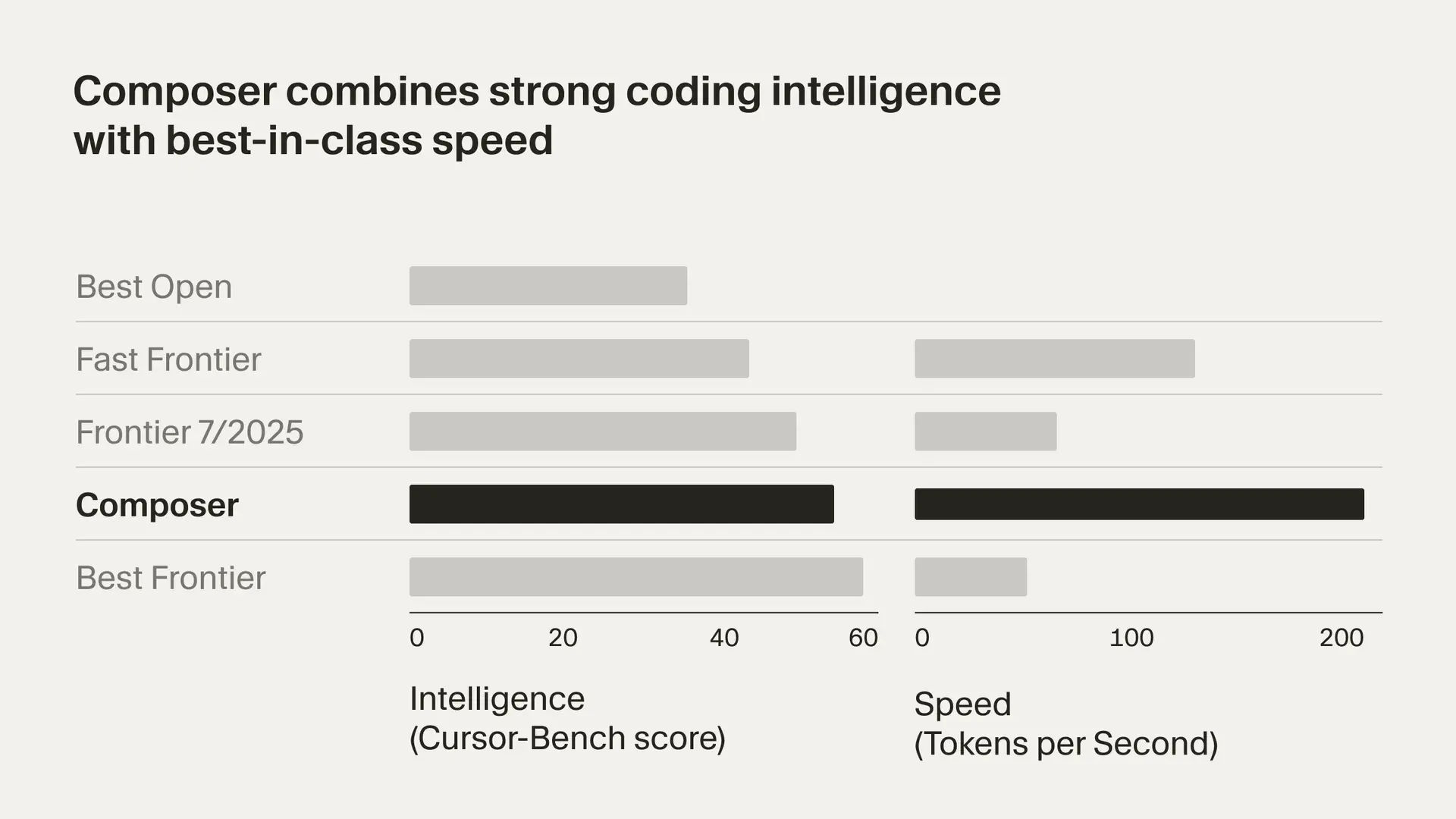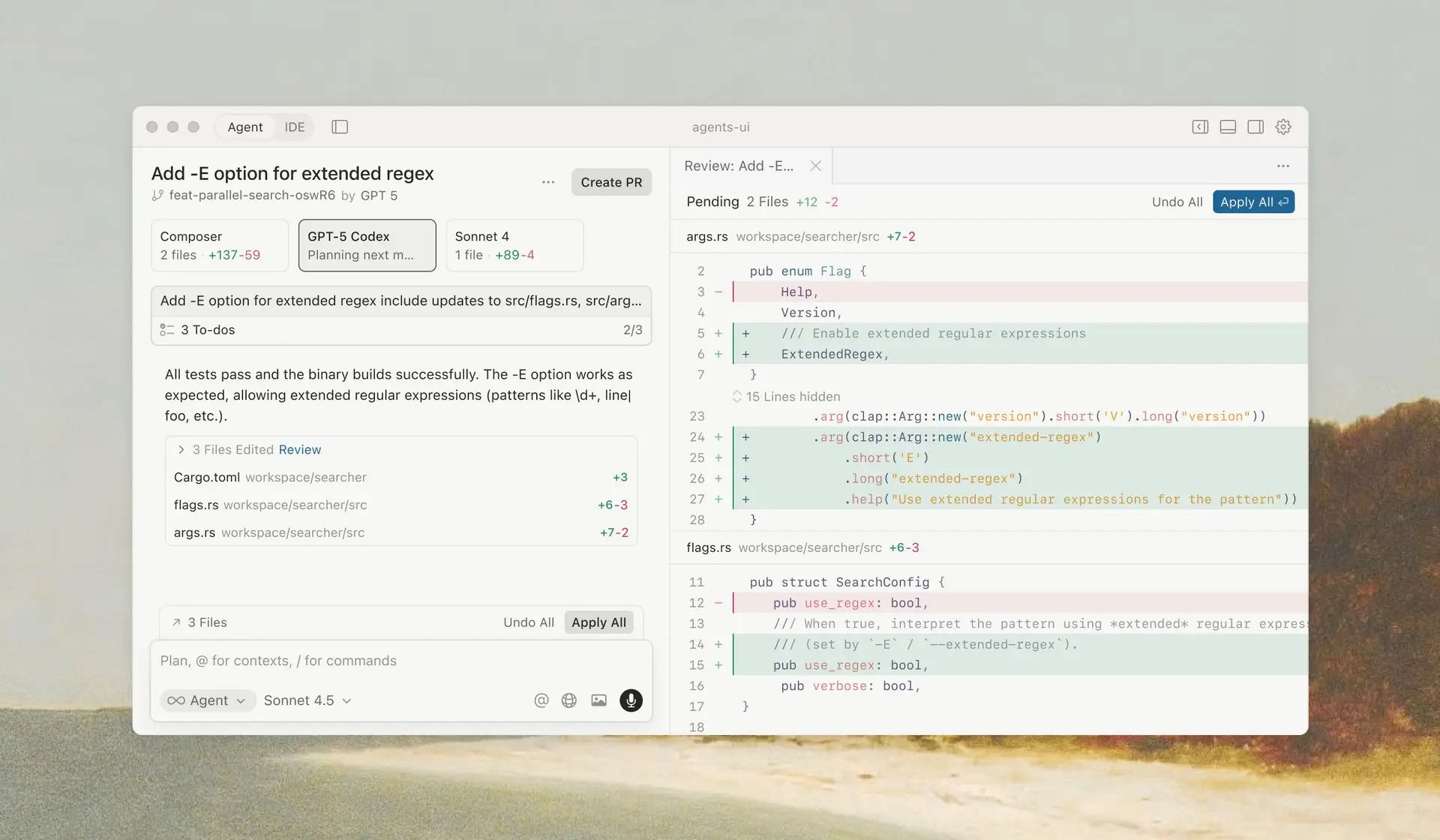ARTICLE AD BOX
Cursor, the AI code editor, has released version 2.0 and introduced its first proprietary coding model, Composer.
This marks a shift for the company, which previously relied on external AI models for code generation. The update also brings a new interface that can run up to eight AI agents in parallel.
Composer is built for speed and low latency. Cursor says the model runs about four times faster than similar alternatives, with most tasks finished in under 30 seconds. While Composer is slightly less accurate than the top coding models, it is much faster.
 Composer's benchmark results show performance close to leading coding models, but with significantly higher speed. | Image: Anysphere
Composer's benchmark results show performance close to leading coding models, but with significantly higher speed. | Image: AnysphereComposer was trained using tools for codebase-wide semantic search, which the company says improves its handling of large projects.
Ad
THE DECODER Newsletter
The most important AI news straight to your inbox.
✓ Weekly
✓ Free
✓ Cancel at any time
Parallel agents and new interface focus
Cursor 2.0’s interface now supports up to eight agents working on a single prompt. To avoid file conflicts, each agent operates in an isolated copy of the codebase using Git worktrees or remote machines.
 Agents like Composer, GPT-5 Codex, and Sonnet 4 work side by side, with their contributions and code review displayed in a unified interface. | Image: Anysphere
Agents like Composer, GPT-5 Codex, and Sonnet 4 work side by side, with their contributions and code review displayed in a unified interface. | Image: AnysphereThe editor is now organized by agent instead of file. Cursor says that having multiple models tackle the same problem improves results, especially for harder tasks.
Browser integration, previously in beta, is now standard. Users can embed a browser in the editor, select elements, and send DOM data to agents. Code review tools have been updated so users can view all changes made by an agent across multiple files in a single view.
Sandboxed terminals, now out of beta, run in a secure environment on macOS. Shell commands have read and write access to the workspace but are blocked from the internet. For enterprise users, Cursor 2.0 adds admin controls for terminals, cloud-based hooks, and audit logs. Teams can set shared commands and rules in the Cursor Dashboard that apply to all members.
Updates to Language Server Protocols (LSPs) improve features like "Go to Definition" and Diagnostics, especially when agents are active or when reviewing diffs. A new voice mode allows users to interact with agents by speech-to-text and set custom commands.
Recommendation
The prompt UI now uses inline pills for files and directories. Context menu items like @Definitions and @Web are gone, as agents now gather context automatically. Notepads have been discontinued, and Background Agents are now called Cloud Agents.
Rapid growth and rising valuation
Anysphere, the company behind Cursor, raised $900 million in May in a round led by Thrive Capital, Accel, and Andreessen Horowitz, reaching a $9.9 billion valuation. The company is reportedly considering another funding round that could raise its valuation to as much as $30 billion.
Annual recurring revenue grew from $100 million to around $500 million between January and June 2025. Cursor is now used by Fortune 500 companies like Stripe, Spotify, and OpenAI, and competes with editors such as GitHub Copilot and Windsurf. The company is among the fastest-growing AI startups in software development.

 4 hours ago
1
4 hours ago
1



